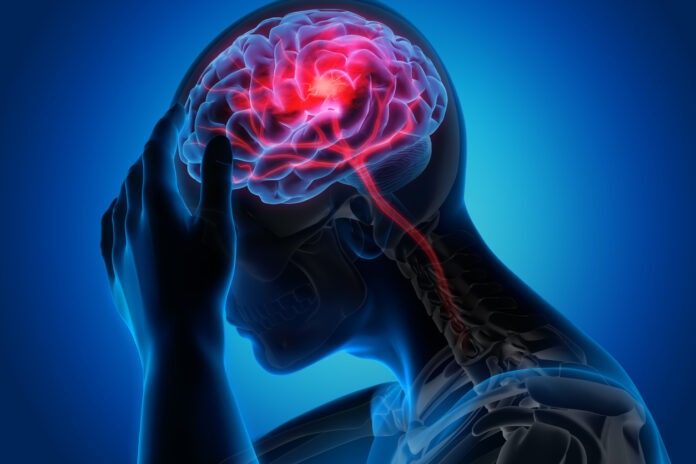Data from the World Health Organization (WHO), reveals that nearly 15 million people worldwide are affected by stroke each year. Of those, around 5 million die and another 5 million become permanently disabled. Stoke is the second leading cause of death globally. A new study warns that these numbers are expected to increase by 50 percent by 2050, and that much of this stroke burden will be borne by low- and middle-income (LMI) countries.
A stroke, or more technically a brain stroke, occurs when a blood vessel carrying oxygen and nutrients to the brain is blocked by a clot, or ruptures. When a clot blocks blood flow, the brain cells in the affected area do not receive oxygen and die within minutes. Similarly, when a blood vessel bursts, blood overflows into the neighboring area increasing pressure that damages the surrounding blood cells.
A stroke arising from a blocked artery is referred to as an ischemic stroke, while a stroke caused by rupture of a blood vessel is called hemorrhagic stroke. A transient ischemic attack (TIA)), often termed a ‘mini stroke’, is caused by a temporary clot. Strokes are also classified by the specific area of the brain that is affected. Around 87 percent of strokes are ischemic in nature, and the rest are hemorrhagic strokes.
A stroke is a serious medical condition that requires immediate emergency care. Time is critical in stroke treatment, with survival and recovery drastically reduced if a person is not treated for a stroke within hours of having one. Being able to get to a hospital and be treated with clot-busting drugs or surgery immediately is critically important. As Emergency Medical Staff (EMS) often say, ‘Time lost is a lost heart’.
A new report published last week in the academic journal Lancet, states that stroke could become a significant public health issue over the next 30 years, with strokes set to occur among everyone, everywhere, including increasingly in younger people.
Global stroke experts estimate that by 2050, around 91 percent of stroke deaths — 8.8 million people — will occur in LMI countries, compared with 86 percent today. Meanwhile, stroke deaths in high-income countries are expected to remain at around 900,000, further widening the disparity gap between the two groups.
Experts say that one of the reasons for a rise in prevalence of strokes is that known risk factors for stroke are increasingly being left unaddressed by people and policymakers in many places. These risk factors include sedentary lifestyles and high calorie processed foods that lead to an increase in the prevalence of overweight and obesity, as well as a rise in type 2 diabetes and high blood pressure among people in many parts of the world.
The report explains that another factor involved in the projected increase in stroke numbers in the years ahead is the phenomena of epidemiological transition — which describes the changes in patterns of population distributions in relation to changes in the pattern of fertility, mortality, life expectancy, and leading causes of death. For instance, hemorrhagic stroke is now seen to occur more commonly in some LMI countries and among Asians.
Additional indications of epidemiological transition include the fact that people in LMI countries are now generally living longer than before, which also means that there are a larger number of older people in these nations, who are potentially vulnerable to strokes. LMI countries are also less well-equipped than richer nations to tackle strokes, which then leads to even more stroke fatalities in these countries.
Moreover, the resources an individual has access to after receiving acute treatment is a major determinant in the chances of recovering without becoming disabled; these resources are far fewer in most LMI states. The report estimates the global direct costs of stroke and loss of income due to the disabling nature of the condition, will more than double to $2.31 trillion by 2050. Asian and African countries are expected to feel the bulk of these economic impacts.
Physicians and healthcare personnel say the most important thing to keep in mind is that the majority of strokes are not inevitable; they are preventable, and the best time to address it is to start now. Individuals can play a role in reducing their own stroke risk by not smoking, exercising regularly, eating a diet that is low in processed food and high in vegetables, and managing existing conditions, including type 2 diabetes and high blood pressure.
But for big shifts to happen, change will also need to occur at the systemic level. With social determinants of health — factors like access to healthcare, healthy food, and where a person lives — likely to account for higher stroke burdens in segments of the population, as well as higher stroke burden in low- and middle-income, government level interventions through health policies and processes to improve stroke outcomes will be needed. countries through health policy and process interventions by the government.

















